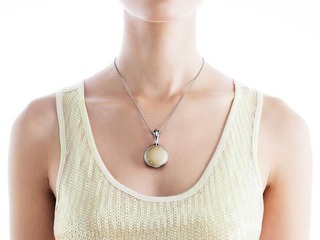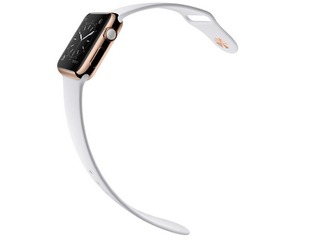
Sonny Vu on how Misfit differs from the Apple Watch
Not only is Shine much cheaper, but Vu says it is also simpler and less "in your face"

At Vator Splash Health on Thursday, Sonny Vu, the Founder and CEO of Misfit Wearables, sat down Casper de Clercq of Norwest Venture Partners to discuss his company and the future of the wearable space.
Misfit develops wearable products with sensor technology for the health and fitness industry, but also smart home devices, including a smart light bulb. It's flagship product is the Shine wearable.
At one point, de Clercq asked Vu about the future of wearables, and others that might be piggybacking off of what the company is doing.
"You definitely led the path to making electronic wearables fashionable, and there's people following suit," he said. "Do you feel like you're going to get copied from the fashionable ends?"
"We're totally flattered that there are copies out there in the U.S. as well in other countries that we're in. I think at the last count in China there are 19 companies. At least, hopefully, we're hitting some chord or relevance because if you're not relevant you don't get copied," said Vu.
"I think what's important is that you consider what is the actual trend. Like, why are people moving in this direction? And I think we are all realizing that making things that are really wearable first is actually really important, because, at the end of the day, you can have an incredibly accurate sensor that you don’t wear, the accuracy of that is zero. Getting people to want to wear something first is important."
Then de Clercq asked Vu specifically about Apple Watch, and whether the device would "crush" Misfit.
(Apple certainly thinks it will outsell Misfit; the company is reportedly producing upwards of 5 million Apple Watches for its first run. Misfit, meanwhile, shipped over 1 million units of its activity trackers in the fourth quarter of 2014, and hopes to see over 1 million a month soon.)
According to Vu, who said he is "excited" by the product and plans to buy one himself, the two devices differ in some very key ways.
"It is at a different price point; $350, $400 is how much I think they're going to go for. And if you're in the market for a screen on your wrist, then Apple Watch is probably t he one to get. If $350, $400 is too much for you, or if having a screen on your wrist is not something you're into, then I think people might consider something else."
Shine, he said, was "designed to have a different kind of experience." It is a device that is "simpler, less in your face," and, at $50, much cheaper as well.
When asked about the sensors and new insights that devices, like the Apple Watch, might be able to provide by having more sensors, Vu discussed the different trends that the industry was currently seeing and the different types of wearables that are becoming popular.
"I think what's interesting is to consider this space. If you're talking about wrist-worn wearables, especially talking about watches, you really see three diverging trends," he said.
First, you see many companies trying to "cram in more functionality," such as the ability to control different devices and apps, as well as alerts and notifications, turning them into "sporty activity tracking devices." Then there are "screen on wrist players," such as Pebble, Samsung and LG; and then the last trend, which Vu called “quite interesting”, is watches that are becoming smart.
Right now, he said, the watch industry is a $65 billion space, and over 80% of its revenue is coming from watches that cost $800 dollars and above.
"When those guys start to make their watches smarter, that’s pretty interesting. That's really disruption in the industry."
Related Companies, Investors, and Entrepreneurs
Related News


Misfit CEO: I'd rather be timeless than fashionable


